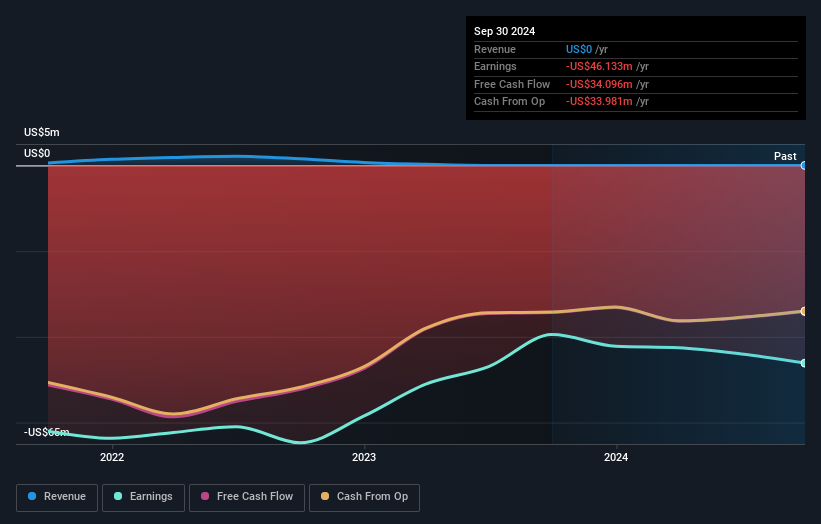- United States
- /
- Medical Equipment
- /
- NasdaqCM:PLSE
Pulse Biosciences, Inc.'s (NASDAQ:PLSE) largest shareholder, Top Key Executive Robert Duggan sees holdings value fall by 4.8% following recent drop

Key Insights
- Significant insider control over Pulse Biosciences implies vested interests in company growth
- The largest shareholder of the company is Robert Duggan with a 69% stake
- Past performance of a company along with ownership data serve to give a strong idea about prospects for a business
If you want to know who really controls Pulse Biosciences, Inc. (NASDAQ:PLSE), then you'll have to look at the makeup of its share registry. And the group that holds the biggest piece of the pie are individual insiders with 71% ownership. Put another way, the group faces the maximum upside potential (or downside risk).
As a result, insiders as a group endured the highest losses after market cap fell by US$54m.
Let's take a closer look to see what the different types of shareholders can tell us about Pulse Biosciences.
See our latest analysis for Pulse Biosciences

What Does The Institutional Ownership Tell Us About Pulse Biosciences?
Institutions typically measure themselves against a benchmark when reporting to their own investors, so they often become more enthusiastic about a stock once it's included in a major index. We would expect most companies to have some institutions on the register, especially if they are growing.
We can see that Pulse Biosciences does have institutional investors; and they hold a good portion of the company's stock. This suggests some credibility amongst professional investors. But we can't rely on that fact alone since institutions make bad investments sometimes, just like everyone does. If multiple institutions change their view on a stock at the same time, you could see the share price drop fast. It's therefore worth looking at Pulse Biosciences' earnings history below. Of course, the future is what really matters.

We note that hedge funds don't have a meaningful investment in Pulse Biosciences. Because actions speak louder than words, we consider it a good sign when insiders own a significant stake in a company. In Pulse Biosciences' case, its Top Key Executive, Robert Duggan, is the largest shareholder, holding 69% of shares outstanding. In comparison, the second and third largest shareholders hold about 1.9% and 1.5% of the stock.
While it makes sense to study institutional ownership data for a company, it also makes sense to study analyst sentiments to know which way the wind is blowing. Our information suggests that there isn't any analyst coverage of the stock, so it is probably little known.
Insider Ownership Of Pulse Biosciences
The definition of an insider can differ slightly between different countries, but members of the board of directors always count. Company management run the business, but the CEO will answer to the board, even if he or she is a member of it.
I generally consider insider ownership to be a good thing. However, on some occasions it makes it more difficult for other shareholders to hold the board accountable for decisions.
It seems that insiders own more than half the Pulse Biosciences, Inc. stock. This gives them a lot of power. Given it has a market cap of US$1.1b, that means insiders have a whopping US$760m worth of shares in their own names. Most would be pleased to see the board is investing alongside them. You may wish to discover if they have been buying or selling.
General Public Ownership
The general public, who are usually individual investors, hold a 20% stake in Pulse Biosciences. While this group can't necessarily call the shots, it can certainly have a real influence on how the company is run.
Next Steps:
While it is well worth considering the different groups that own a company, there are other factors that are even more important. Consider for instance, the ever-present spectre of investment risk. We've identified 3 warning signs with Pulse Biosciences (at least 1 which is potentially serious) , and understanding them should be part of your investment process.
Of course, you might find a fantastic investment by looking elsewhere. So take a peek at this free list of interesting companies.
NB: Figures in this article are calculated using data from the last twelve months, which refer to the 12-month period ending on the last date of the month the financial statement is dated. This may not be consistent with full year annual report figures.
New: Manage All Your Stock Portfolios in One Place
We've created the ultimate portfolio companion for stock investors, and it's free.
• Connect an unlimited number of Portfolios and see your total in one currency
• Be alerted to new Warning Signs or Risks via email or mobile
• Track the Fair Value of your stocks
Have feedback on this article? Concerned about the content? Get in touch with us directly. Alternatively, email editorial-team (at) simplywallst.com.
This article by Simply Wall St is general in nature. We provide commentary based on historical data and analyst forecasts only using an unbiased methodology and our articles are not intended to be financial advice. It does not constitute a recommendation to buy or sell any stock, and does not take account of your objectives, or your financial situation. We aim to bring you long-term focused analysis driven by fundamental data. Note that our analysis may not factor in the latest price-sensitive company announcements or qualitative material. Simply Wall St has no position in any stocks mentioned.
About NasdaqCM:PLSE
Flawless balance sheet low.


